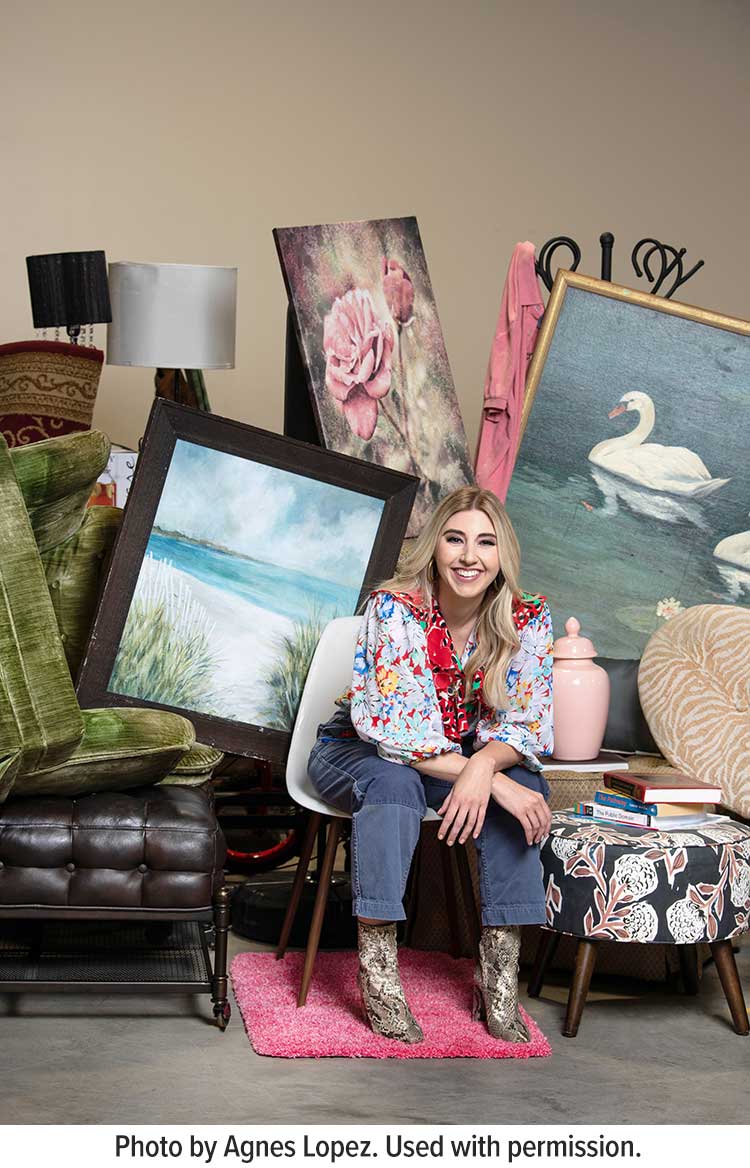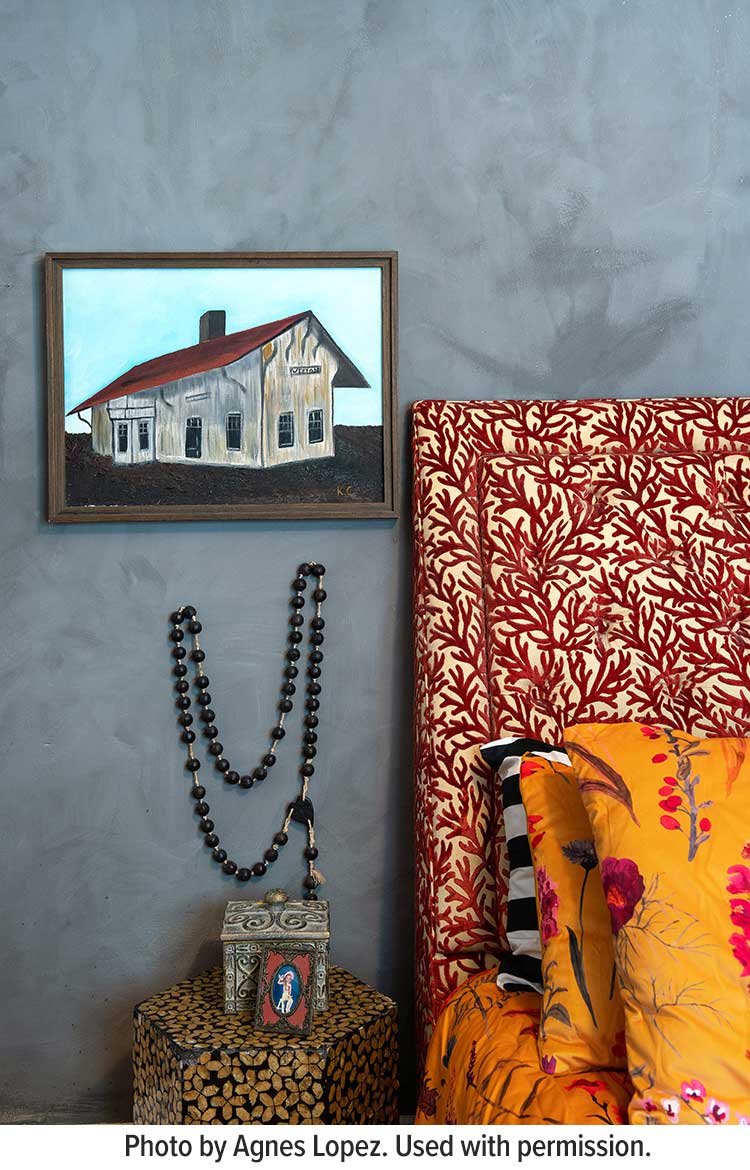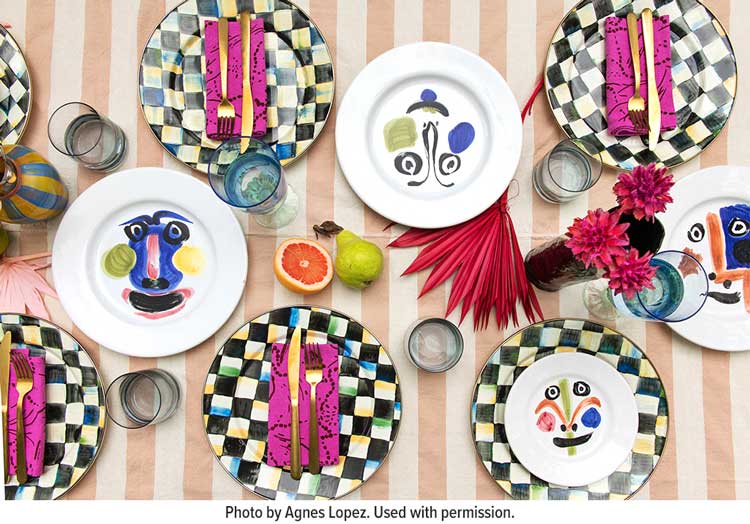Last updated June 6, 2025
 Writer and artist Virginia Chamlee has been sifting through shelves of inexpensive glassware at Goodwill and haunting estate sales for mid-century modern furniture bargains since she was a child. She shares her secondhand buying tips with readers in her book, Big Thrift Energy, as well as via her popular newsletter, What’s Left. Consumers’ Checkbook chatted with Chamlee about shopping smart and what sort of furniture and fashion to look for.
Writer and artist Virginia Chamlee has been sifting through shelves of inexpensive glassware at Goodwill and haunting estate sales for mid-century modern furniture bargains since she was a child. She shares her secondhand buying tips with readers in her book, Big Thrift Energy, as well as via her popular newsletter, What’s Left. Consumers’ Checkbook chatted with Chamlee about shopping smart and what sort of furniture and fashion to look for.
Click below to listen to our Consumerpedia podcast episode.
You started thrifting as a child. How has it changed?
Virginia Chamlee: My grandmother raised me, and it was just the two of us. She would take me to estate sales, live auctions, and thrift stores. For decades, I was always the youngest person there.
For a long time, thrifting wasn’t a first choice. It was where you went to maybe get a gag gift or something for a Halloween costume. But I think younger consumers, Gen Z especially, are turning to thrift stores as their first choice. Like if they need a dining room table or some clothes, they might go straight to the thrift store.
Why are thrift stores so popular now?
VC: There are a few things. Younger consumers are just more comfortable shopping secondhand. For older consumers, it was always seen as buying someone else’s stuff. But there has been a push towards vintage and sustainability in recent years.
Some of it is also marketing. You look at Architectural Digest and a lot of celebrities have vintage in their homes. Well, where can you get vintage? At the thrift store.
Wasn’t there a pickup in thrifting during the COVID-19 pandemic?
VC: More people started turning to vintage because of all the supply chain issues. Like I bought a couch from CB2 during that time, and it took a year and a half to actually get it. Whereas when you’re shopping vintage, if you go to a thrift store, you can buy it and take it with you that day. With our current economic climate and the tariffs, it remains to be seen if even more people will be shopping secondhand!

How can I get good deals on good quality furniture at a thrift store?
VC: You can often determine the quality of something just by looking at it or touching it. Avoid peeling plywood or rickety tables and go for solid wood or real marble table tops. A vintage wooden Biedermeier dresser at a thrift store is going to be higher quality than a new IKEA chest of drawers, and the older piece will probably cost less. The kid’s furniture section is also a good place to find bargains, since kids grow out of those little pieces so quickly.
And if you are specifically looking for furniture, start at one of the Habitat for Humanity stores, which get loads of stuff in that category.
Any tips on finding hidden treasures for your home?
VC: The blanket and sheet section at a thrift store can be really amazing because sometimes staffers will hang vintage quilts and tapestries. These can function as art or throws on a sofa. Just take them home and wash them or treat them with a little bit of vinegar—that will get the smell out of anything.
People are used to looking at labels on used clothing. Should they do it for home pieces, too?
VC: Yes! For an upholstered piece, look under the cushions, and in a chest of drawers there will be a label inside the drawer or a marking stamped on the back. Look for labels like Maitland-Smith, Drexel, John Widdicomb, Vladimir Kagan, Knoll, or Vivai del Sud. And things marked made in North Carolina or Pennsylvania are a good bet, since those places are known for high-quality furniture.
For pottery or ceramics, Italy, Spain, and Portugal are known for good quality, so turn the piece over and look to see if it mentions one of those places on the back. Though sometimes you'll see a Walmart tag!
What kind of clothing should I seek in a thrift store?
VC: Look for materials like silk, leather, and 100 percent cotton, which are indicators that a piece will stand the test of time. I always check the women’s skirt suit section, since there are so many stellar leftovers from the 1980s and 1990s. Women don’t wear suits like they used to, so people donate Dior and Ungaro suits to Goodwill. I often find really high-end skirt suits and wear the blazer with jeans or hike the skirt up and wear it as a strapless dress or top.
What about for men?
VC: Men’s blazers and ties almost always have something really valuable hiding in the racks. Look for “made in Italy” labels on suit jackets—this is a great indicator of craftsmanship.
You also counsel looking for oddball or even weird clothing?
VC: Yes! For instance, I found a really beautiful Christian Dior cape, probably made in the 1960s, at Goodwill for $10. That’s the kind of thing that gets passed up at the thrift store. And I have a really wonderful bright red satin Victor Costa opera coat. I got it at a Salvation Army in the Halloween section. I’m sure someone thought it was a Dracula costume, but I saw it on 1stdibs.com [an auction website] for $900!

What’s the downside to shopping at thrift stores?
VC: Nothing is merchandised. Plus it’s very rare that you go thrifting and find exactly what you need. If you’re looking for a coffee table in mahogany that’s a very specific size, you might not find that. But maybe you’ll find a bamboo coffee table, a vintage trunk or an ottoman that could work as a coffee table.
Do you have a thrifting kit you take with you?
VC: I have a measuring tape on my key chain, which is super handy because I’m never without it. You can get them on Amazon. Plus I always have a packing blanket or even an old sheet to wrap furniture or breakable dishes in. If I forget one, I’ll just buy a towel at the thrift store—that works the same way.
Any strategies for upping your chances of thrifting success?
VC: Go to as many thrift stores as possible as often as you can. Eventually, you’re bound to find something.


